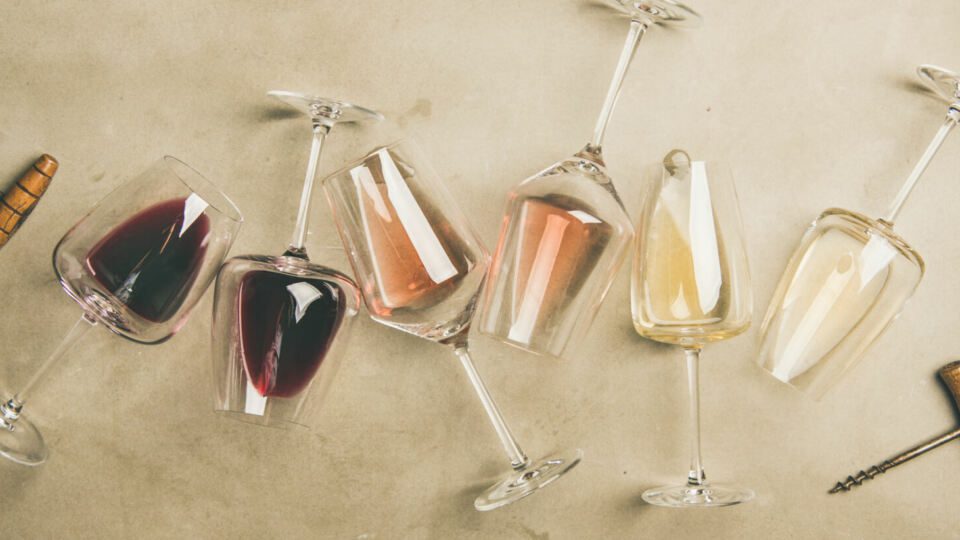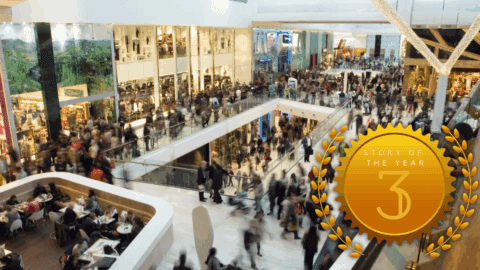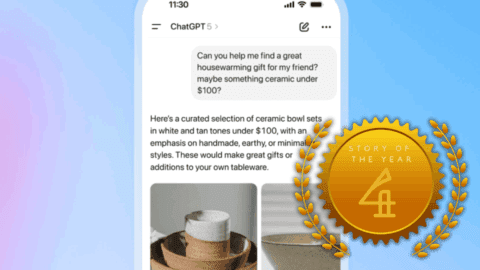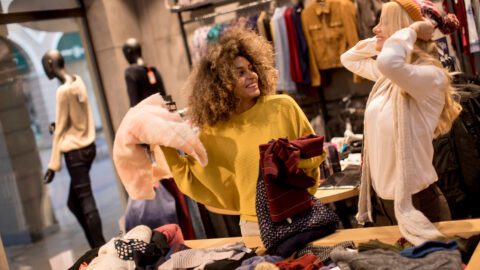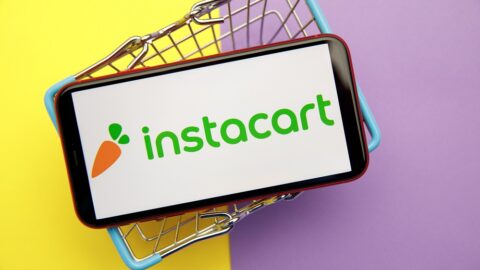As consumers spend more time and money online, brands and retailers are feeling greater pressure to stand out. Advanced merchandising and more granular personalization can help, but executives may wonder how can they go the extra mile to show they really understand customers’ wants, needs and preferences.
Katerina Axelsson believes taste could be one of the next frontiers for personalization, which is one of the reasons she founded Tastry. As she was working her way through college as a chemist in the wine industry, she noticed a chasm between which wines winemakers thought would perform well — and which were actually successful in-market.
“The entire industry — from the winery to the distributor, to the retailer, to the consumer — is forced to make educated guesses, and the risks are high,” said Axelsson in an interview with Retail TouchPoints. “What starts out as a million-dollar production at the winery becomes a $30 bottle of wine that gets poured down the drain. The process is wasteful, expensive and a guessing game.”
So Axelsson taught a machine to understand the chemistry of wine the same way a human does. With a proprietary mix of machine learning, sensory science and analytical chemistry, TastryAI can pinpoint the palate preferences of individual consumers so retailers and distributors make the best wine recommendations. This ultimately leads to a domino of benefits including increased sales, improved customer experiences and reduced product waste.
Specifically, Tastry individualizes recommendations by decoding the flavor and aroma matrices of wines, by chemically analyzing thousands of products in the lab and running them against the unique consumer palate of each individual. Axelsson noted that a person’s palate is as unique as a fingerprint, and it is something that brands can use to their advantage.
Retail TouchPoints (RTP): Many retailers, wineries and food brands rely on user-generated content and reviews to guide decision-making. Why does flavor profile present such a big gap in wine specifically?
Katerina Axelsson: Crowdsourced content can provide a measure of the average performance of a product across a large number of people, or a specific individual’s preferences across multiple products. Neither considers the individual palate, experience, context or culture of the individual trying to decide which wine to buy.
Reviews can be unreliable. For example, in the case of many reviews for a single wine on one rating platform, Cupcake Red Velvet has 2,177 2-star or lower ratings and 1,650 5-star ratings, but the official average score is 3.5 stars. This is a typical occurrence among crowdsourcing recommenders. The individual is left to decide which numbers to rely upon — will they love it or hate it? And if the individual is left to choose which data to rely upon, then we have to question the value of the ratings in the first place.
RTP: How does the accuracy change, if at all, when using recommendations from a family or friend?
Axelsson: An individual might find another person with whom they have similarly perceived the quality of one or more wines and decide to follow that person’s recommendations. This is probably slightly better, but it breaks down. Two individuals may share a palate for pinot noir, but when the style changes to malbec or chardonnay, the similarities can end. The consumer never knows when differences will appear, and this often leads to unsatisfactory purchases.
An individual ultimately needs to follow multiple reviewers depending on the terroir [the environmental conditions, especially soil and climate, that give a wine its unique flavor and aroma], as well as varietal, context, etc. This is complicated at best, and onerous and unsustainable at worst. In either case, the consumer will need to wait for other people to review new wines before they can make any decision. Tastry understands what you like without expert tasters, and can provide accurate recommendations based on your individual palate before anyone has even tried the wine!
RTP: How does TastryAI help close this big gap?
Axelsson: TastryAI is a term we use to refer to many artificial intelligence and machine learning algorithms that Tastry has developed. One algorithm interprets our novel chemistry data and “decodes the flavor matrix.” Our chemistry method will pull over five million data points out of a single bottle of wine. Understanding how that is going to taste, smell and feel to a human palate is the first step. It essentially reduces all the chemistry of the wine — just like the human palate does — to a flavor represented mathematically. At this point, we still don’t know who will like the wine.
That’s when another algorithm looks at that flavor, and the flavor of every other wine or subset of wines (such as 2,000 wines in a grocery store inventory). Then the algorithm chooses a set of deceptively simple quiz questions that can be intuitively answered by almost any person but are able to divide different consumers while simultaneously functioning as analogs to many compounds, or groups of compounds, found in wine. Consumers answer a simple quiz once and an entire retail assortment is ranked and matched to the individual through complex AI systems.
RTP: Can you give me an example?
Axelsson: One question may be “How do you feel about the smell of fresh-cut grass?” The AI already “knows” which compounds or groups of compounds are responsible for that sensation. When the answer to that question is known, the AI has learned about many compounds you may like or dislike.
You can envision AI as building a Venn diagram of questions which “granularizes” its understanding. We ask customers as few questions as possible, but enough to understand 80% or more of their unique palate. We call this “decoding the palate matrix.” At this point, we collate the flavors and palates in a multidimensional space and essentially measure the distances between the many vectors of the consumer’s palate and the wines. Those wines that are “closer” to the palate are more likely to be good matches, and those that are further away are less likely to be good matches. That is how Tastry makes recommendations! We describe them as the final evolution of hyper-personalized recommendations: “Singularization.”
RTP: Are there other ways retailers can use taste profiles to their advantage online and in stores?
Axelsson: In addition to recommending beverages, many of our retail partners are using TastryAI to integrate cross-aisle pairings of meal kits, hot food items or recipes (with TastryAI taking into account the dietary needs of each individual). This tactic creates a meaningful relationship with the consumer, helping them to craft a terrific social experience with friends or family quickly and easily, while also adhering to personal preferences and/or requirements that are important to them.
At the business level, TastryAI also can help retailers be more data-driven and customer-focused. Once TastryAI provides recommendations to a substantial portion of a consumer base, which normally takes about 90 days, TastryAI can compare the retailer’s consumer palates on a store, local and regional level to better curate store product mix. This helps to reduce wasted inventory and streamline business processes.
RTP: As brands and retailers attempt to create more personalized experiences, what do they need to know about bringing taste into the equation?
Axelsson: The data we see indicates that consumers want more personalized experiences, but they are simultaneously frustrated by the paradox of choice: 10 years ago, many retailers might have offered a one- or two-dozen selection of beers. Today, there are commonly over one thousand, not to mention all of the spiked seltzers and ready-to-drink products on the market now. Wine has been plagued by this problem longer than most, but there are no signs of it waning — from micro-distilleries to kombucha, the paradox of choice is only accelerating.
Retailers need to understand that consumers still expect the Right Product, Right Price, Right Time, Right Place, and as retailers try to provide these selections to remain competitive, they will have to provide the tools consumers need to make educated decisions. Those that do that well will succeed, those that don’t will continue to lose market share.
RTP: What do you think this means for the future of the wine and spirits market?
Axelsson: I believe the era of “buy it and try it” is over. Consumers are increasingly expecting to know they will like a product before they risk buying it, and this will only be exacerbated by the shift to online sales. You can’t hold the bottle, read the label or taste a sample online. I think in five to 10 years’ time, the idea of endlessly spending money buying and trying products we end up not enjoying will be a thing of the past. Incorporating sensory experiences and personalization into product marketing will be essential.



